 In preparation for my favorite holiday, I was recently perusing through the Halloween decorations at a local megastore. For me, Halloween standards are carved pumpkins, bed sheet ghosts, and candy; lots of candy. However, for others, the scariest of holidays is all about fear. Some of the most iconic Halloween characters that makes ones blood run cold and stand frozen in fear, i.e., bats, spiders, and snakes, are the same creatures I find most fascinating. Unfortunately, it is this very fear that has served as a death sentence for those same misunderstood species that actually do a great deal to help us.
In preparation for my favorite holiday, I was recently perusing through the Halloween decorations at a local megastore. For me, Halloween standards are carved pumpkins, bed sheet ghosts, and candy; lots of candy. However, for others, the scariest of holidays is all about fear. Some of the most iconic Halloween characters that makes ones blood run cold and stand frozen in fear, i.e., bats, spiders, and snakes, are the same creatures I find most fascinating. Unfortunately, it is this very fear that has served as a death sentence for those same misunderstood species that actually do a great deal to help us.
Bats are without a doubt a well known symbol of Halloween. I am not sure if it is because of their association with the vampire or as the rabies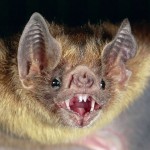 spreading vector in Stephen King’s book Cujo, but bats are one of the most feared species. In stark contrast to what people think, bats provide a huge ecological benefit for a multitude of reasons. A single brown bat can ingest approximately 1,000 small insects in just one hour. Fruit and nectar eating bats act to spread seeds throughout the forest via their feces and help as pollinators. In addition, the anticoagulation properties found in the saliva of the vampire bat is being researched as a treatment for stroke victims and cardiac patients.
spreading vector in Stephen King’s book Cujo, but bats are one of the most feared species. In stark contrast to what people think, bats provide a huge ecological benefit for a multitude of reasons. A single brown bat can ingest approximately 1,000 small insects in just one hour. Fruit and nectar eating bats act to spread seeds throughout the forest via their feces and help as pollinators. In addition, the anticoagulation properties found in the saliva of the vampire bat is being researched as a treatment for stroke victims and cardiac patients.
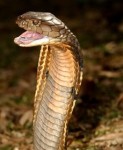 Just the site of reptiles, especially snakes, can send people screaming. Depending on the species, snakes are important in controlling rodent populations. Not only is pest control important for the agricultural industry, as rodents can destroy millions of dollars of crops annually, but also for controlling the spread of zoonotic parasites and disease as rats and mice are known carriers of salmonella, tapeworm, and even the plague. Furthermore, snakes are considered a keystone species wherein they are a direct indicator of the health and biodiversity of the environment.
Just the site of reptiles, especially snakes, can send people screaming. Depending on the species, snakes are important in controlling rodent populations. Not only is pest control important for the agricultural industry, as rodents can destroy millions of dollars of crops annually, but also for controlling the spread of zoonotic parasites and disease as rats and mice are known carriers of salmonella, tapeworm, and even the plague. Furthermore, snakes are considered a keystone species wherein they are a direct indicator of the health and biodiversity of the environment.
Like bats and snakes, spiders are extremely efficient exterminators. Spiders help farmers in crop fields and in barns as their webs catch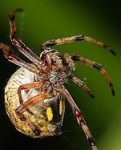 winged insects that can destroy plants and spread disease among livestock. The strength of the spider web has been of interest to scientists for years. The tensile strength of spider silk is comparable to that of high-grade steel, and can hold its strength at temperatures below -40°C and over 220°C. Spider silk is a protein and very high in vitamin K; there are some cultures that utilize spider silk as a foodstuff. In addition, depending on the species, spider venom is being investigated for potential uses in medicine.
winged insects that can destroy plants and spread disease among livestock. The strength of the spider web has been of interest to scientists for years. The tensile strength of spider silk is comparable to that of high-grade steel, and can hold its strength at temperatures below -40°C and over 220°C. Spider silk is a protein and very high in vitamin K; there are some cultures that utilize spider silk as a foodstuff. In addition, depending on the species, spider venom is being investigated for potential uses in medicine.
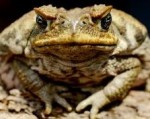 A key ingredient in every Hollywood witches brew, toads are another keystone species that is a direct indicator of environmental health. Like all amphibians, toads exchange oxygen through their sensitive skin. When there are toxins in the environment amphibians are the first to be effected. Moreover, toads love to feed on insects like moths and beetles both of which can reek havoc on plants. Despite old wives tales, although accused, toads do not give humans warts.
A key ingredient in every Hollywood witches brew, toads are another keystone species that is a direct indicator of environmental health. Like all amphibians, toads exchange oxygen through their sensitive skin. When there are toxins in the environment amphibians are the first to be effected. Moreover, toads love to feed on insects like moths and beetles both of which can reek havoc on plants. Despite old wives tales, although accused, toads do not give humans warts.
The howl of a wolf can cause the hair on the back of even the strongest person’s neck to stand on end. Long associated with the dark arts and labeled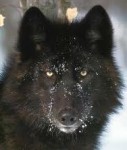 as hounds from hell, wolves have been feared for centuries. In actuality, wolves play key roles in balancing the ecosystem. When the gray wolf was eradicated from Yellowstone National Park, U.S.A., the unchecked elk population completely destroyed entire areas including young willow tree groves. Beaver that rely on willow trees for food and dam building materials were also forced out of the habitat. In the 1990s when wolves were reintroduced to Yellowstone, elk populations were once again controlled and the habitat flourished.
as hounds from hell, wolves have been feared for centuries. In actuality, wolves play key roles in balancing the ecosystem. When the gray wolf was eradicated from Yellowstone National Park, U.S.A., the unchecked elk population completely destroyed entire areas including young willow tree groves. Beaver that rely on willow trees for food and dam building materials were also forced out of the habitat. In the 1990s when wolves were reintroduced to Yellowstone, elk populations were once again controlled and the habitat flourished.
If you ask me, the aforementioned species are anything but scary. It is important for us to understand that every species plays an important role in balancing the ecosystem. Whether a wolf, bat, spider, toad, or snake, all of these creatures control pests that damage plants/crops and spread disease. Imagine if we did not have this help and had to take care of problems like insects, elk, and rodents on our own. It is estimated that wildlife exterminators save humans over $3 billion U.S. annually. I think that it would be a much scarier world without those creatures than with them.
